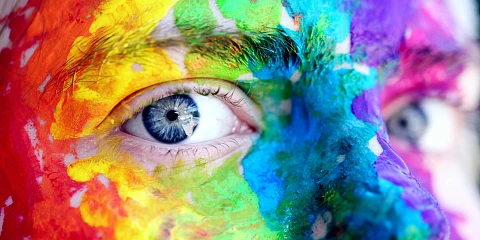
Avatars with Diversity
June 3, 2024
Enhancing our maximum representation in the digital world
If we do a quick Google search on “how to make inclusive or diverse avatars”, we just get a lot of references to how to create your avatar in x model/universe, or with a little luck, we get a pack of avatars “ with diversity” pre-designed.
If avatars will be our representation and/or accompaniment in the digital world, how can we make them represent the greatest number and types of people possible?
At SNGULAR, we have started working on these concepts, as we are concerned about aligning our social values with the technology we produce. For starters, what does “diversity” mean?:
“Diversity is the presence of people with different physical, social and personal characteristics in a group or organization. These characteristics are, among others, race, ethnicity, age, sex, sexual identity, religion, physical and mental ability, language, income and training.”
We must ensure that technology represents our physical, ethnic, cultural, functional characteristics, even our gender identity. Nowadays, when we mix more than ever, and we challenger and blur barriers, how do I explain to the AI that I identify as gender neutral? Or that my scarf is not an accessory, but rather a sign of identity?
Our colleague Paloma Tirado tells us about the challenge of having gone from using avatars to create our most “super-powered” versions to using them to represent our nature - who we are, what we like, how we identify or see ourselves.
“In an increasingly digitalized world, artificial intelligence (AI) is acquiring one of the leading roles in the most diverse contexts: from being part of a search engine to contributing to hiring decisions in companies. However, despite their innovation and efficiency, AI models are not immune to bias. This bias, which is usually a reflection of social inequalities, can have consequences, especially when they overlap with sensitive aspects of human identity such as race, religion and gender.”
“The fundamental problem lies in the complex interaction between data, algorithms and human decisions. Each artificial intelligence model is nourished by a set of training data, selected for a specific purpose and in search of neutrality. However, achieving this neutrality is not an easy task, as it requires a careful process of data collection and preparation. This collection may have limitations such as the time of data collection, the cost of its acquisition, and privacy. The designs of AI algorithms in many cases require the use of already existing data, the acquisition of which has not been planned to fulfill the use case that must be fulfilled. Using this data requires specific processing so that it adequately adheres to the functions we are looking for. All these processes require human decisions, in which each participant can propagate their own biases, increasing the bias of the final model.”
On the one hand, we have taken the opportunity to give a facelift to our beloved Alfred, who many of you might know because he has been our favorite chatbot for years - and, getting smarter every day, he helps us find our way within SNGULAR. We've tried to get him to absorb what he sees on our teams, and become a more diverse avatar. For example, blurring their age, or adding elements to his clothing that refer to his values, such as LGTBIQ+ diversity or his environmental commitment. In addition, he now wears a hearing aid, proudly, to try to give visibility to more types of abilities. And although we will continue to iterate and learn, we know which line of work we want to follow.
 Photo of Alfred 2024
Photo of Alfred 2024
On the other hand, we have iterated our avatar generation product, Sngular Avatars, which you may have used in events such as the Google Cloud Summit 2023, the VLCTesting 2023, or the T3chfest 2024, in order to enhance the representation of diversity.
At these events, by increasing the number of people using the product, we were able to more clearly observe the trends of the model. Above all, we saw cases of misgendering, or erroneous association of the person's gender, usually confusing women who ended up being represented with traits that are socially associated with the male gender (hair, more marked features, etc.). This led us to deduce that the model clearly had a bias towards the male gender, surely due to inequalities in representation with respect to the female gender when training it. However, if this happened with 50% of the population, what would happen if someone with even more minority traits used this product?
This experience led us to consider new use cases in which the user could have distinctive cultural features (turbans, hijab, taquiyah, quipa, etc.) or different skin tones. We also considered the presence of people with less normative features, such as a man wearing makeup; and also people with more androgynous features.
Initially we observed a clear tendency towards the “Westernization” of all these types of people. In this case we specify to the model that we want a professional photo for LinkedIn, wearing a denim shirt. We can see how a woman wearing a hijab is completely transformed and, although her facial identity remains, the rest of her identity fades in the change of her most identifying features.
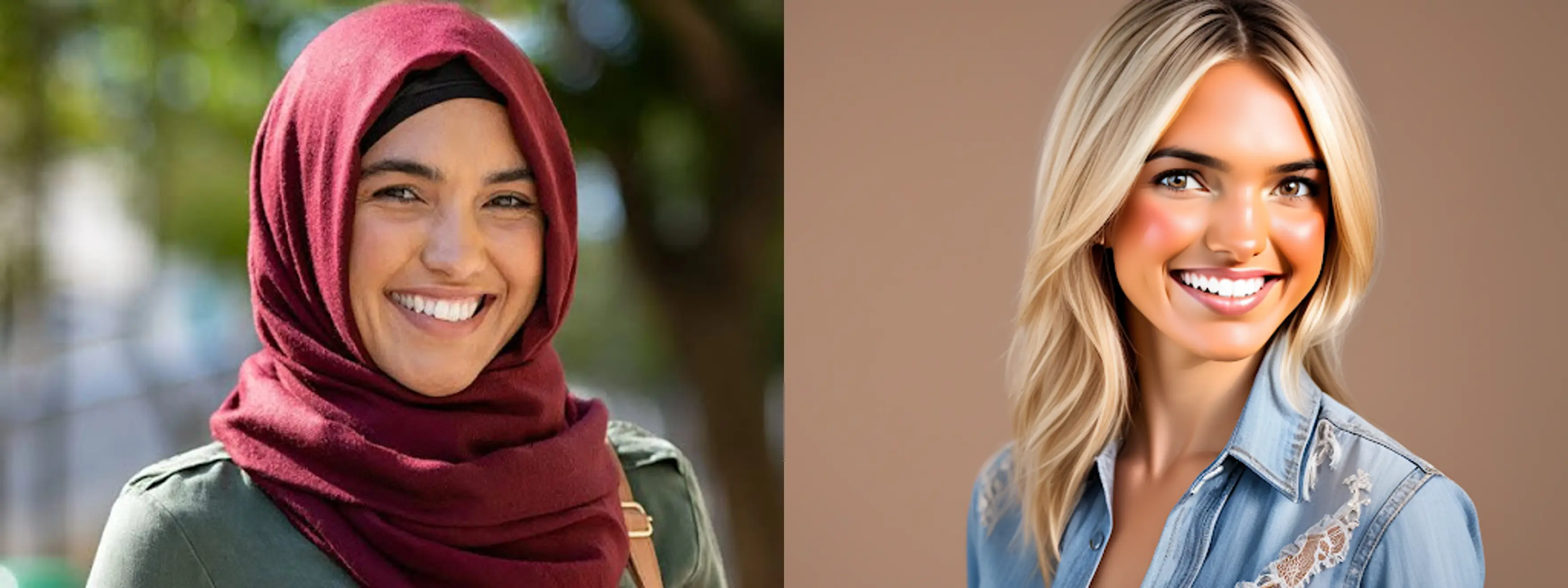 First version cultural traits
First version cultural traits
However, when iterating on this result, we found it necessary to incorporate another type of model, which would force certain restrictions to be met. In this case, we detect the contour or edges of the initial image, so that the generation of the new avatar adheres to these edges. With this modification, the result obtained is this:
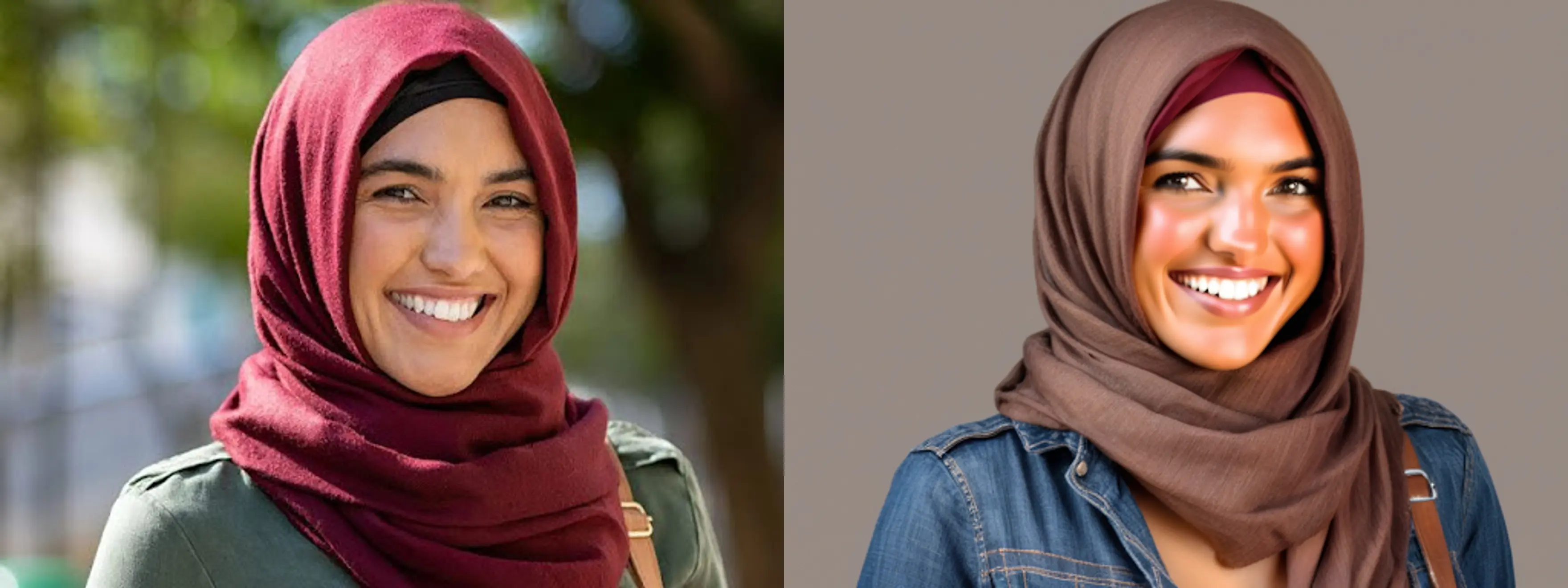 New version cultural traits
New version cultural traits
In the case of people with more androgynous features, we saw clearly the tendency to give the person features of the gender they interpret them to be. In this case, the model interprets this actress as a “woman” and, despite having short hair, adds a feature commonly associated with women: long hair.
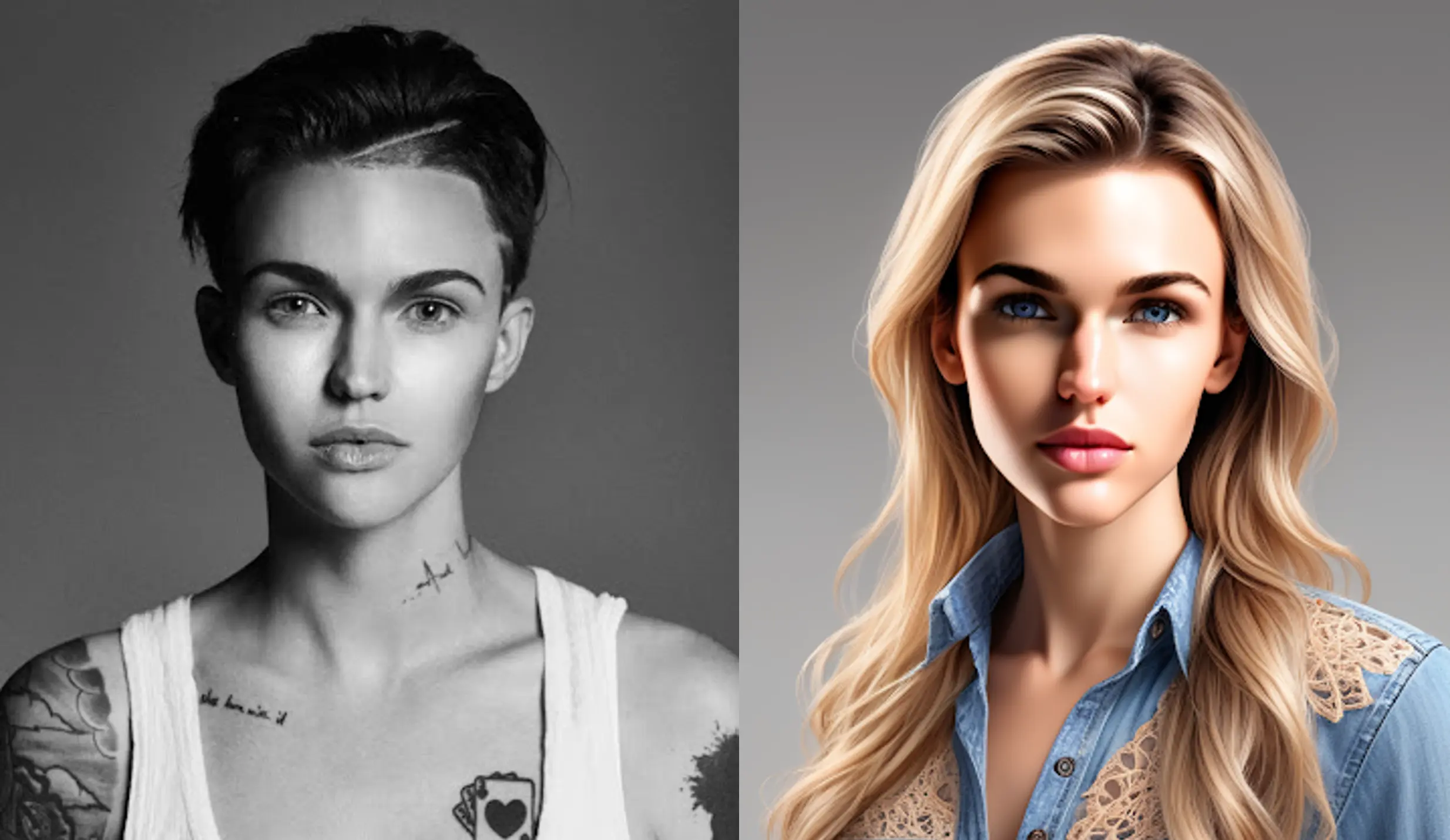 First version androgynous features
First version androgynous features
Given that in this use case we are looking for a professional photo, it is not in our best interest that such an identifying feature as hair be altered. By adding edge detection, we achieve a much more reliable result to the original image:
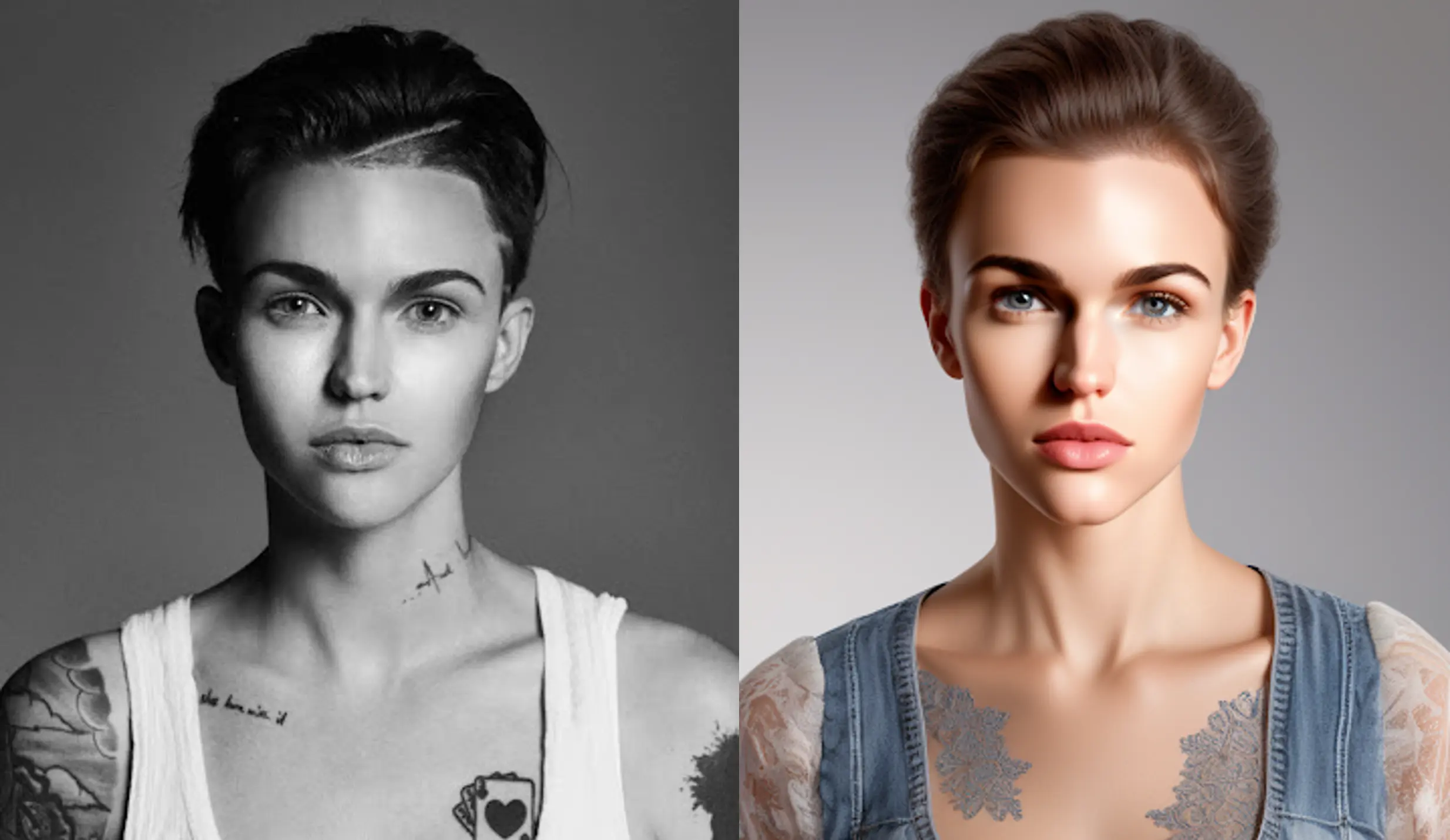 New version androgynous features
New version androgynous features
Even with more complex examples we can find that these identity features that we have already mentioned are maintained:
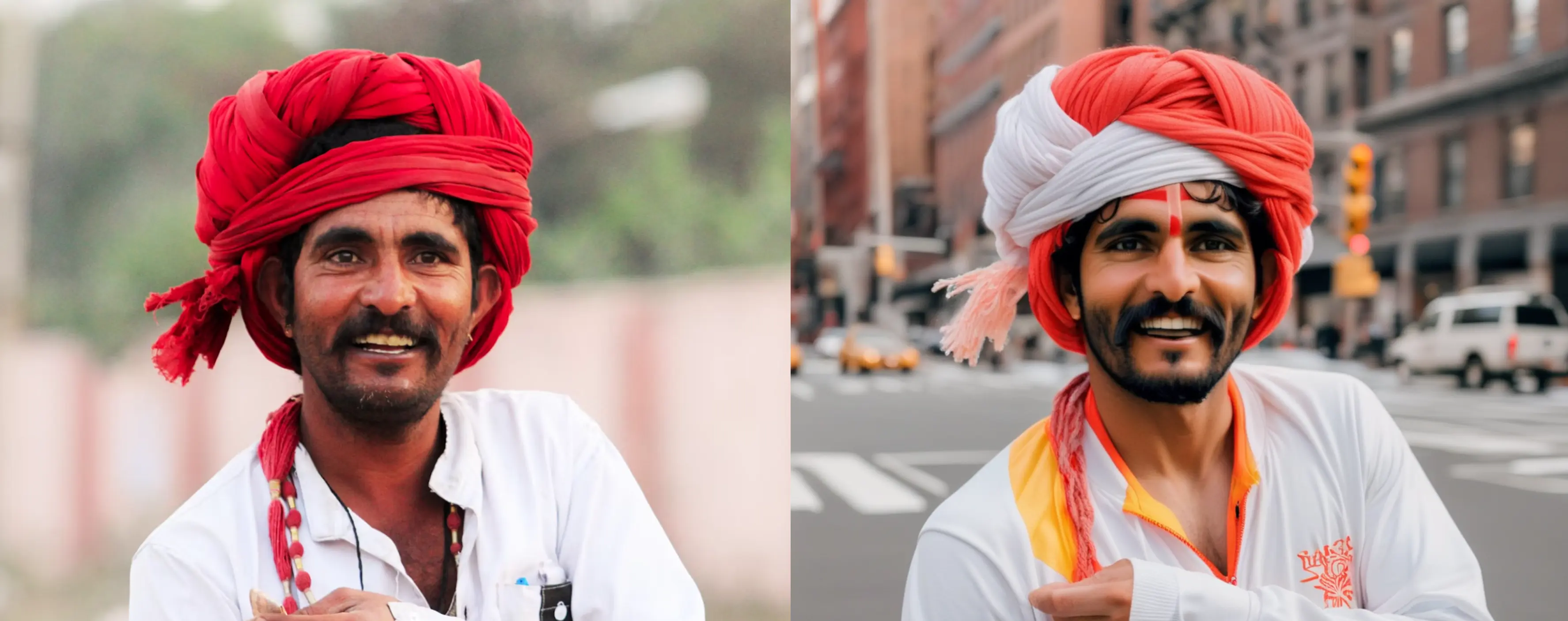 Prompt: “A person with a sporty outfit in New York”
Prompt: “A person with a sporty outfit in New York”
 Prompt: “A muslim person with an elegant outfit with New York in the background”
Prompt: “A muslim person with an elegant outfit with New York in the background”
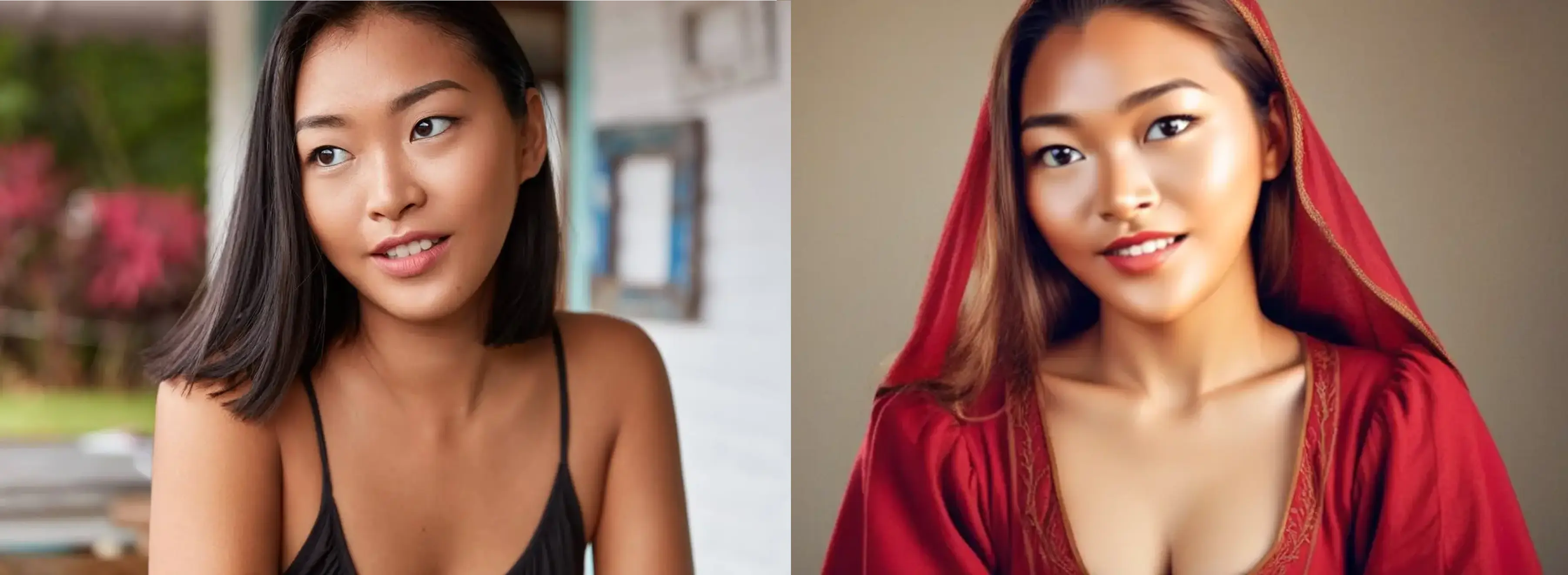 Prompt: “The image of a person wearing a medieval costume”
Prompt: “The image of a person wearing a medieval costume”
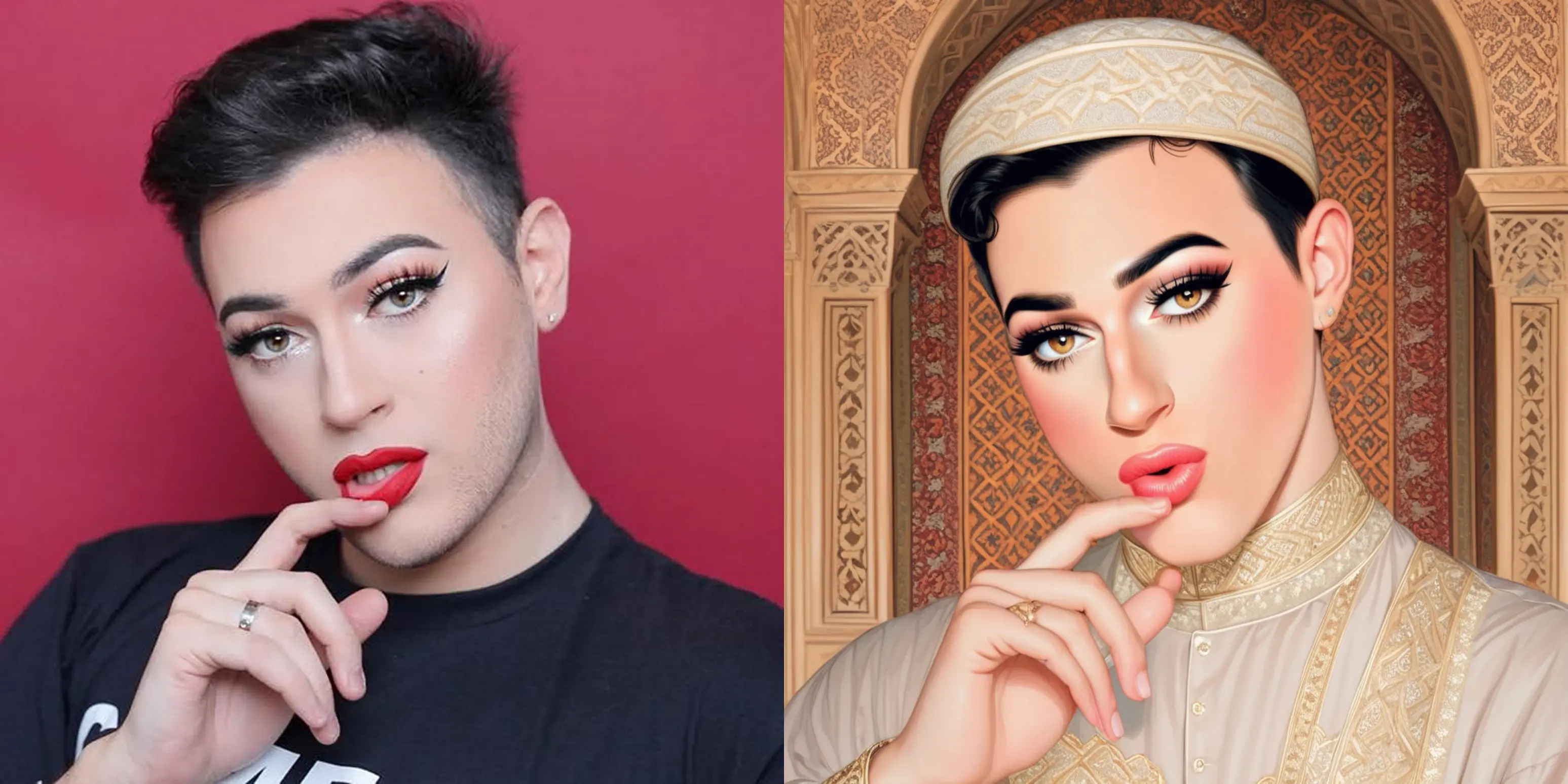 Prompt: “A person with a muslim costume with a palace in the background”
Prompt: “A person with a muslim costume with a palace in the background”
We will continue working on new challenges to ensure that our Sngular Avatars can maximize the representation of the diversity that enriches us and gives us uniqueness. With this technology there is no longer an excuse for your events to offer attendees to become their avatar, and take with them their coolest version that will make your event memorable. The perfect excuse for the audience to make your event viral by sharing their avatar on social media, and not be “another one.” Are you going to miss out on it? Contact us, and you will have cutting-edge AI for less than you imagine.
Our latest news
Interested in learning more about how we are constantly adapting to the new digital frontier?

Insight
April 16, 2024
Leave a mark on people, not on the planet
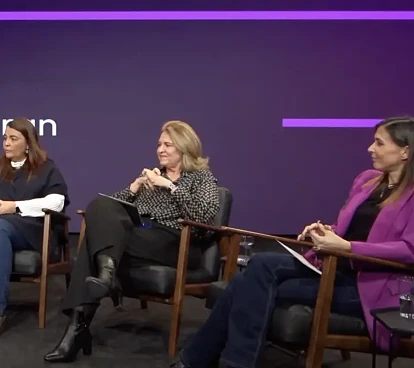
Interview
March 19, 2024
Women Who Inspire: Female Role Models and Impostor Syndrome

